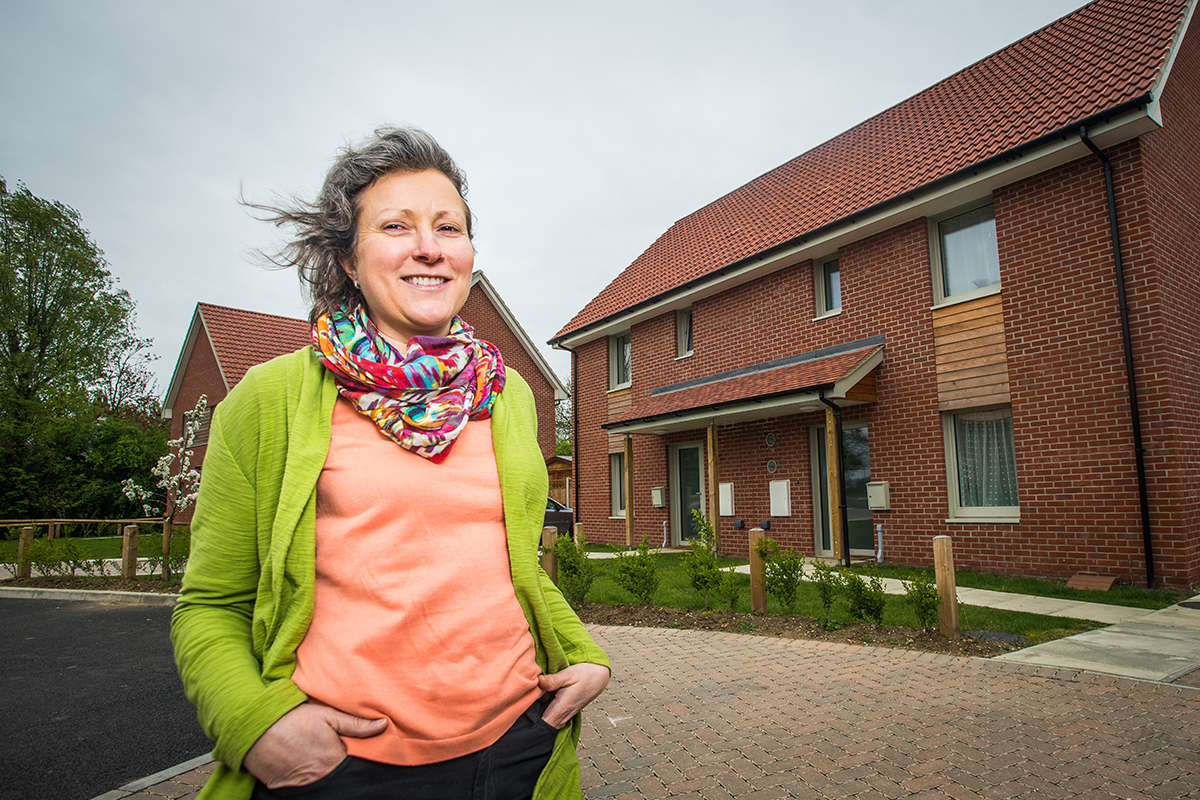
Alex Rowley is MSP for the region of Mid Scotland & Fife
It’s time for Scottish building standards to be tightened
MSP Alex Rowley makes the case for his private members’ bill calling for the Passivhaus building standard – or a local equivalent – to be adopted in Scotland
Given the daily headlines about sky-rocketing energy bills and escalating climate breakdown, there has never been a better time to embrace the international Passivhaus energy-efficiency and comfort building standard.
More than one in three people in Scotland find energy bills unaffordable. Of these, 80% say rising energy costs are a factor and 24% say their home is hard to heat.
“My proposed private members’ bill has a simple ask: that all new housing in Scotland be built to the Passivhaus standard or to a Scottish equivalent”
We are experiencing a perfect storm, where Scotland has not met its greenhouse gas emissions targets and the rise in gas prices is expected to plunge another 150,000 Scots into fuel poverty. Delay and dither will exacerbate the climate crisis and leave too many of our fellow citizens struggling to heat their homes.
My proposed private members’ bill has a simple ask: that all new housing in Scotland be built to the Passivhaus standard or to a Scottish equivalent.
Why Passivhaus?
Passivhaus is a tried and tested ‘fabric first’ building standard and methodology, backed by over 30 years of international evidence. It produces buildings with a high level of occupant comfort that use very little energy for heating and cooling.
“Shockingly, an average new home can have a heating demand of 60% more than forecast”
Public awareness of Passivhaus construction is growing, and when people are informed about the benefits of this approach, support grows. When asked, 97% of Scotland’s Climate Assembly, a representative sample of society, supported a call for the Scottish government to update building standards in line with the Passivhaus standard or a local equivalent within the next five years.
It would be unlikely that all assembly members had been fully aware of Passivhaus construction prior to their involvement in the project, yet the debate around this methodology resulted in almost unanimous support for its introduction into Scottish legislation.
Reliable and consistent
In my view, the strongest argument for introducing Passivhaus standards is the fact that it eliminates the very real ‘performance gap’ in the construction of new-build homes.
This gap is the difference between the assumed energy performance of a building based on its design, and the energy performance a building actually achieves. Monitoring of thousands of existing Passivhaus buildings has shown that energy use, on average, is extremely close to the amount modelling predicted.
Shockingly, an average new home, by contrast, can have a heating demand of 60% more than that forecast using SAP (standard assessment procedure) modelling.
“The proposed new standards do not go nearly far enough to tackle inefficient housing and reduce greenhouse gas emissions. They also miss the crucial aspect of my proposed bill, which is the need to close the performance gap”
In 2020, the University of Bath looked at post-occupancy monitoring of 97 UK Passivhaus dwellings. It provided further evidence that these buildings perform as designed and predicted in modelling. “These results provide powerful evidence in favour of the Passivhaus standard as a reliable means of obtaining low-energy and low-carbon buildings,” the research concluded.
Building a net-zero future
In June 2022, the Scottish government announced its Building a net-zero future strategy for new-build homes. Its proposals for new building regulations aim to “cut emissions of all new-build homes by nearly a third”.
While I welcome the direction the government going in, the proposed new standards do not go nearly far enough to tackle inefficient housing and reduce greenhouse gas emissions. They also miss the crucial aspect of my proposed bill, which is the need to close the performance gap. Unless we introduce a verification process for energy efficiency, the performance gap will remain and we will fail in our aim to tackle household emissions appropriately.
In short, the strategy is a welcome improvement, but it does not bring the standard of modelling and testing up to Passivhaus quality.
A step-change improvement
A new-build Passivhaus is designed to operate with a space heating need of 15 kWh per square metre per year. By contrast, the space heating demand of the average UK home is currently about 145 kWh/sq m/year and a new-build home to the new Scottish requirements has been modelled to be about 28 kWh/sq m/year.
Clearly, Passivhaus standards would cut heating needs by an additional 50% and offers a step-change in building performance, especially if the worsening effect of the performance gap is factored in.
Consultation
We must move beyond words and take action to deal with climate change and protect people from out-of-control energy costs. With these standards available to us, it makes little sense to continue building to a lesser standard. Scotland could be a trailblazer in clean, green, comfortable housing and breaking the retrofit cycle once and for all.
The Scottish Parliament has the power to develop this practical solution to the energy and climate crises and we should get on and do it.
Alex Rowley, MSP for Mid Scotland & Fife
The Domestic Building Environmental Standards (Scotland) Bill is out for consultation until 27 July 2022. Please share your views on the bill here.
Sign up for our Scotland newsletter
Already have an account? Click here to manage your newsletters












